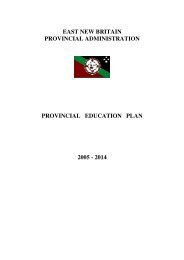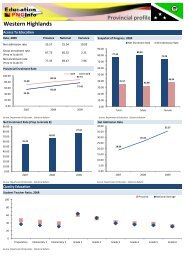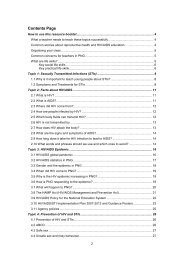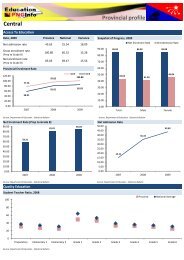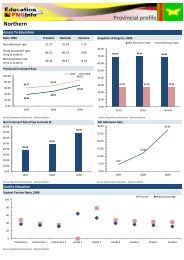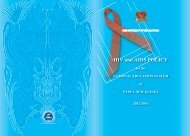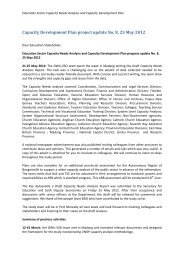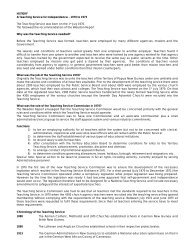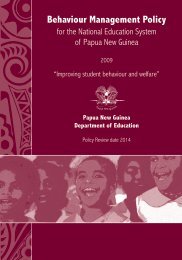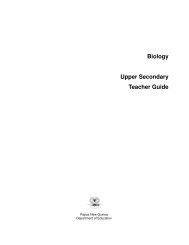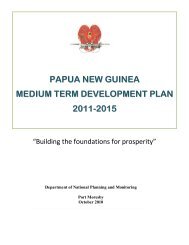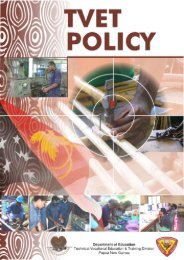Geology Upper Secondary Syllabus - Department of Education
Geology Upper Secondary Syllabus - Department of Education
Geology Upper Secondary Syllabus - Department of Education
Create successful ePaper yourself
Turn your PDF publications into a flip-book with our unique Google optimized e-Paper software.
<strong>Geology</strong>Grade 12 units12.1 Volcanism and Earthquakes9–10 weeksPapua New Guinea, being located on the ‘ring <strong>of</strong> fire’, is prone to naturaldisasters that are related to geological activities. The 1998 Aitape tsunami,and 1994 Rabaul and 2004 Manam volcanic eruptions, are all examples <strong>of</strong>natural disasters that severely disturbed the lives <strong>of</strong> the people, particularlypeople who lived close to the areas affected by these events. The 2005tsunami that swept through many parts <strong>of</strong> Asia and took thousands <strong>of</strong> livescan not be easily forgotten. The absence <strong>of</strong> early warning systems may havecontributed to the loss <strong>of</strong> many lives.This unit enables students to learn about the formation, structure and types<strong>of</strong> volcanoes. The distribution <strong>of</strong> volcanoes and their related geologicalactivities are discussed, as are earthquakes, seismic waves and theirintensities.This unit enables students to understand how tsunami, volcanoes andearthquakes are caused. Students outline measures that need to beundertaken by people before disaster strikes. Students or a community eldercan also share experiences <strong>of</strong> their traditional practices <strong>of</strong> early warningmethods. Students also do research on the modern early warning systemsthat exist in various parts <strong>of</strong> the world and propose where these could bestrategically located in Papua New Guinea.Learning outcomesStudents can:1. demonstrate an understanding <strong>of</strong> fundamental concepts <strong>of</strong> geology2. design or use geological models to explain the interior and exterioractivities <strong>of</strong> the earth3. describe and explain the impact <strong>of</strong> geological events on the communityand the environment5. analyse, evaluate and interpret geological data and information6. communicate geological information in different ways7. demonstrate an understanding <strong>of</strong> traditional geological knowledge andpractices in their societies.To achieve the learning outcomes, students:• describe how tsunami, volcanoes and earthquakes are caused• construct and/or use models <strong>of</strong> volcanoes to demonstrate how they erupt• use geological and world maps to interpret geological features• use geological data to interpret intensity <strong>of</strong> earthquakes• determine the focus and epicentre <strong>of</strong> earthquakes through calculation <strong>of</strong>available data• develop a case study <strong>of</strong> an area affected by volcanic eruptions orearthquakes16



